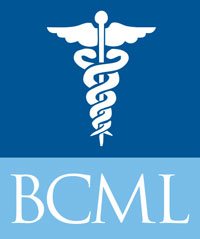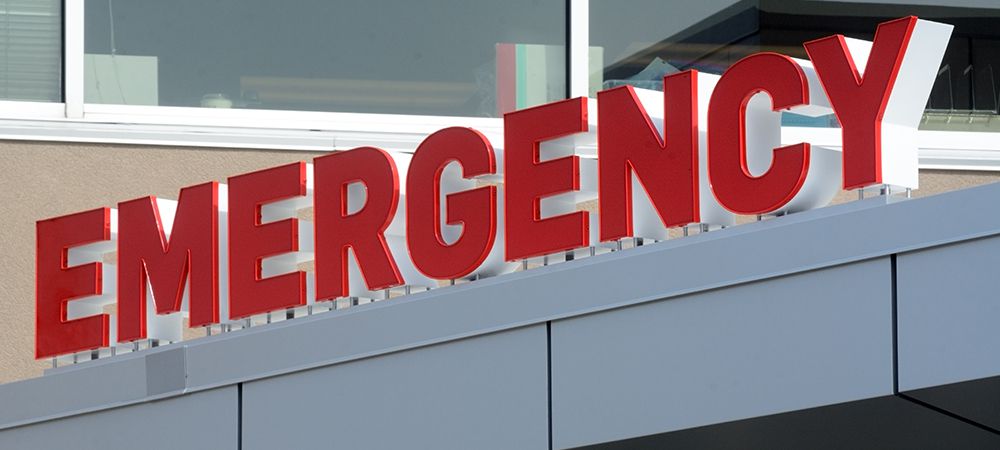Having the option to go to a medical facility for non-life-threatening illnesses or injuries is crucial in the province of Ontario, Canada. This is due to the fact that going to hospitals and waiting to be tended to by their staff and doctors may not be so convenient for issues that are not considered emergencies. Some people may be more comfortable going to hospitals where their regular doctors are working; however, there may be times where illnesses or injuries may happen at any given time and getting appointments with their regular physicians cannot wait. These are the scenarios where urgent care centers and walk-in clinics come into the picture. This article will show readers the importance and differences between these two types of medical facilities.
Important Things to Know About Walk-In Clinics
People may not realize it but walk-in clinics and urgent care centers have many similarities. One of the main things that make these types of medical facilities different from hospitals is due to the fact that they were created to handle patients without prior appointments. Also, they are meant to handle medical cases that do not threaten the lives of their patients. However, these types have their own differences that people should know so that they would not go through the hassle of going to a specific medical facility that may or may not be able to handle their illnesses or injuries. You may refer to the following list for some of the important things you should know about walk-in clinics, which includes the common reasons and medical issues that patients may have to get treated in walk-in clinics:
- For those who are covered under the Ontario Health Insurance Plan (OHIP), their visits to walk-in clinics will be covered. However, people should also know that there are only certain medical services that are covered by the OHIP. Dental services are some of the treatments that OHIP usually does not cover. If you are given prescription medication, the OHIP will not be able to cover them in a walk-in clinic setting. OHIP covers prescription medicines only in hospital settings. You should always inquire with the walk-in clinic to check if your treatment will be covered by your OHIP.
- A walk-in clinic has a first come, first served rule. This is very important for those patients who need immediate attention from the physicians and staff working in walk-in clinics. Walk-in clinics give these patients options especially if they are unable to set immediate appointments with their regular doctors. Convenience is the main reason why patients would rather go to walk-in clinics than going to hospitals.
- Since walk-in clinics handle medical cases that are not life-threatening in nature, there is less chance for patients to catch contagious diseases. Having fewer patients waiting in line to be served as compared to hospitals, walk-in clinics will not risk patients to get affected by illnesses from other patients.
- Walk-in clinics have the capability to give assessments, treatments, and advice to patients. As long as the illnesses or injuries are minor in nature, walk-in clinics can effectively handle these cases. The doctors working in walk-in clinics can also prescribe medicines to patients, which is very convenient. Some walk-in clinics are situated inside or near pharmacies. This makes it possible for patients to purchase their needed medication as soon as they receive their prescriptions.
- Walk-in clinics offer family doctor services. This makes it convenient for people of all ages to get treatment and assessments. With doctors who specialize in family medicine, walk-in clinics are known to be all-in-one medical facilities. This is because these doctors have the skills and knowledge to diagnose and treat multiple types of medical issues. Patients may go to walk-in clinics to get checked for common colds, allergies, and other non-life-threatening ailments.
- For patients who have issues in relation to their eyes, walk-in clinics offer the professional services of optometrists. Walk-in clinics provide patients with eye exams and health checks to diagnose their needs and requirements for getting prescription glasses. It is also known that an eye exam can also be a way to determine if a patient may have other diseases. Some diseases like heart problems, high blood pressure, sickle cell anemia, and diabetes show signs in a patient’s eye before these diseases manifest in other areas.
- Dental services are also offered by walk-in clinics. Most of the time, dental issues are not considered to be too severe unless bacteria have affected deep into the patient’s mouth. Dental services in walk-in clinics may range from check-ups, deep cleaning, or teeth restoration treatments. By giving patients oral exams, a walk-in clinic may detect signs of oral cancer, heart disease, or diabetes.
- Physiotherapy is one of the important services offered by walk-in clinics. People who have physical injuries or are recovering from them will be helped by the trained and certified physical therapists working in walk-in clinics. Patients are guided with their strengthening, rehabilitation, and recovery from joint and muscle pain. Orthopedic treatments are common in walk-in clinics. These treatments help patients suffering from conditions such as sprains, fractures, strains, and arthritis.
- Walk-in clinics have audiologists available to treat patients that have hearing concerns. By offering hearing aid services and hearing tests, these doctors are able to effectively diagnose and treat patients with their hearing problems. Hearing aids may come in various types. In-the-canal hearing aids are given to patients who wish to be discreet with their problems.
- Most walk-in clinics offer x-ray and ultrasound services. These are essential to diagnose internal injuries and illnesses of patients. The results coming from these devices are necessary for doctors to come up with effective treatments for patients. The results may be used by in-house doctors or patients may bring their results to their regular doctors whichever they prefer.
- Another necessary service offered by walk-in clinics is nuclear cardiology. This is a non-invasive technique that is used to test the health of the heart of a patient. This involves assessing the current health of the patient’s heart, and it is also used to assess the blood flow within the system of the patient. By monitoring the patient’s heart, a walk-in clinic may catch signs of any heart disease that might affect the patient. Having the opportunity to know of this possibility can help prevent major heart issues in the future.
What Makes Urgent Care Centers Different From Walk-In Clinics?
Seeing that a walk-in clinic is able to cover various types of illnesses or injuries, there may be a need for patients to go to a different type of medical facility if they have more severe problems. Without needing to go directly to hospitals and avoid the long waiting lines from the emergency rooms, patients can go to the nearest urgent care centers. It is highly advised that people should be familiar with the things that make urgent care centers different from walk-in clinics. The list below shows some of the common differences between these two types of medical facilities:
- Since walk-in clinics are focused on giving physiological treatments to injuries that would help promote improvement in the movement of the patient’s limbs, they are not known to treat simple fractures. Walk-in clinics are equipped to treat mild physical injuries such as bruises and sprains. Urgent care centers, however, have qualified doctors or clinicians that apply splints or casts to patients who need them. Treating minor fractures are one of the common services that are handled in urgent care centers.
- Urgent care centers are allowed to treat lacerations and injuries that may need patients to receive stitches. Invasive treatments are offered in urgent care centers as long as they do not pose high risk to the lives of the patients.
- Treating asthma is one of the most common medical issues that urgent care centers are equipped to handle. This problem may be considered severe since patients with asthma find it hard to breathe and have greater risk of problems to their respiratory systems. However, these cases may still be considered not severe enough to threaten the lives of the patients.
Going To Walk-In Clinic Can Be Cost-Effective
If you are not able to set an appointment with your regular doctor, it is highly recommended that you find an alternative to treat any type of medical issues that you may have. By going to a walk-in clinic, you may be surprised that your issue might be diagnosed and treated at the earliest possible time. This option can save you time and may help cut the costs of your medical bills. Knowing the different types of medical issues a walk-in clinic near you is offering is very important. You have to consider the fact that walk-in clinics hire licensed and certified doctors, therapists, and staff that can effectively treat various types of illnesses and injuries.
Furthermore, these professionals will also direct you to a hospital when they determine that your case is severe enough and needs to be handled in an emergency room. It is best that you get a professional medical evaluation first if you are unsure of the sickness that you currently have. If you are looking for a reputable walk-in clinic within the province of Ontario, you may contact Bay-College Medical & Lockwood at 416-929-1900. Our staff will do its best to immediately treat your medical issues. They are also ready to answer any of your medical concerns.


